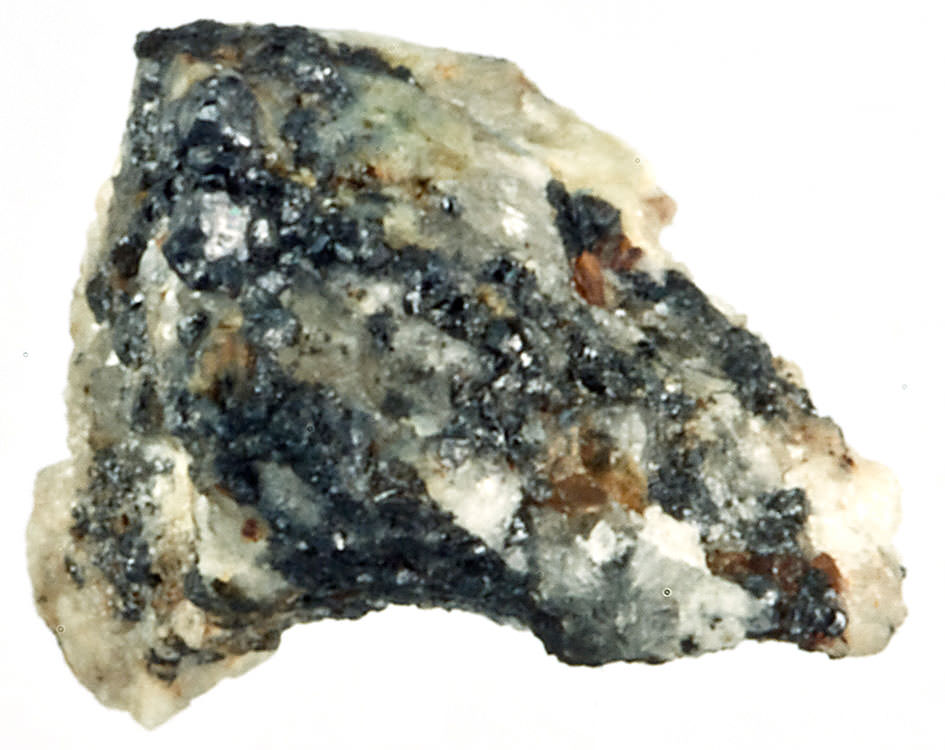[/caption]
A unique type of crystal appears to have its origins in meteorites, according to a new study. Quasicrystals are an unusual type of crystalline structure that were initially thought to have only occurred in artificial conditions in labs, and impossible in nature, until they were found by geologists in the Koryak mountains in Russia in 2009. Their origin was unknown, but now new evidence indicates that they most likely came from space in meteorites, dating back to the early stages of the formation of the solar system.
Regular crystals, such as diamonds, snowflakes and salt, are symmetrical, ordered and repeating geometrical arrangements of atoms that extend in all three spatial dimensions (at both microscopic and macroscopic scales); they are commonly found in different types of rock. Quasicrystals are different however, with variations from the standard structure and composition.
When the newly found quasicrystals were studied, they were found to be composed primarily of copper and aluminum, similar to carbonaceous meteorites. The clincher came when the isotope measurements (ratios of oxygen atoms) indicated an extraterrestrial origin.
From the paper:
“Our evidence indicates that quasicrystals can form naturally under astrophysical conditions and remain stable over cosmic timescales.”
“The rock sample was first identified for study as a result of a decade-long systematic search for a natural quasicrystal (4). Quasicrystals are solids whose atomic arrangement exhibits quasi-periodic rather than periodic translational order and rotational symmetries that are impossible for ordinary crystals (5) such as fivefold symmetry in two-dimensions and icosahedral symmetry in three-dimensions. Until recently, the only known examples were synthetic materials produced by melting precise ratios of selected elemental components and quenching under controlled conditions (6–8). The search consisted of applying a set of metrics for recognizing quasicrystals to a database of powder diffraction data (4) and examining minerals outside the database with elemental compositions related to those of known synthetic quasicrystals.”
“What is clear, however, is that this meteoritic fragment is not ordinary. Resolving the remarkable puzzles posed by this sample will not only further clarify the origin of the quasicrystal phase but also shed light on previously unobserved early solar system processes. Fitting all these clues together in a consistent theory of formation and evolution of the meteorite is the subject of an ongoing investigation.”
The report has been published in the January 2 issue of Proceedings of the National Academy of Science. The article (PDF) is here. More detailed information about quasicrystals is also available here and here.


Paul Steinhardt has gotten interested in this of late. He wrote a Science article about 5-fold symmetries in Islamic art and how that leads to a quasi-crystal-like pattern. This became a fashion in Europe in the 19th century, and musical interpretations popular, such as Robert Schumann’s “Arabesque.”
Five fold symmetries are interesting, where the simplest of these is the pentagon. All polygons were thought to have a ruler-compass construction, but the pentagon refused to yield to this. Galois lay down some mathematical rules for solving polynomials, in fact the day before he died in a duel. It turns out quintic polynomials, those with an x^5 leading power, do not work within this system of algebraic roots. As a result tessellations with 5-fold structures are curious with these quasi-periodic structures. Freeman Dyson wrote an interesting article on this:
http://www.ams.org/notices/200902/rtx090200212p.pdf
titled “Birds and Frogs.” This is not highly technical, but filled with deep insights and unknowns.
I can’t comment much on the space connection. This looks a lot like typical mineralization in sedimentary rock on Earth.
LC
Hi LC.
You may be interested in this article which appeared in the Physorg web-site today:
http://www.physorg.com/news/2012-01-hardship-stars.html
Relating to the 100 YSS symposium: http://www.100YSS.org/faq.html
Having read what is available online in your book on the subject it was a fascinating insight into the future realms of space travel.
Well, someone did get Nobel prize for this last year, right?
He found that the pattern doesn’t repeat.
And it was an interesting story, no one believed him it could be true.
Dan Shechtman won the Nobel Prize in Chemistry for synthesiing quasi-crystals. It is funny I think that it is called impossible outside the lab. The laboratory configuration is just a set up which makes some process possible. There is nothing which makes it impossible for similar conditions to occur naturally. It just might improbable or rare. For all we know there might be planets with lots of hydrocarbon chemistry which gives rise to a bit of plastic.
LC
They were thought to be impossible and the title makes it more interesting for less scientific people. I don’t find it funny, but I grin anyway. 😀
Well, the nature could make something you investigate impossible. Like let’s find a cold fusion…LC, you want a Nobel prize? 😀 You can use your laboratory set up that makes it possible. 😀
Ooh, nice! It seems these quenched quasicrystals (QCs) like quenched glass rather counterintuitively survives severe shocks.
The paper claims it is somewhat (but not systematically) tested in the laboratory up to ~ 35 GPa shocks. And that high pressure, > 7 GPa, shocks was either the cause of or was survived by the QC.
The clear carbonaceous chondrite signature and its meteorite like unequilibrated spread in oxygen ratios is accompanied by a similar REE (Rare Earth Element) signature.
The enclosure of QC by the shock created stichovite implies an impact event.
Finally, the rock sample sets up many conundrums:
– It is closely related to the highly reduced environment close to the star in the protoplanetary disk where CAIs (Calcium-Aluminium-rich Inclusions) where born among the first solids. It should hence be informative on that.
Yet they can’t date it with the usual 26Al/26Mg radioactive series thermometer.
– The association of Al and Cu is unprecedented in CAIs and the two elements are “essentially never associated in chondrites”.
So if they can work this, it may be fruitful!